Introduction to Machine Learning: Supervised and Unsupervised Learning
I would like to give full credits to the respective authors as these are my personal python notebooks taken from deep learning courses from Andrew Ng, Data School and Udemy :) This is a simple python notebook hosted generously through Github Pages that is on my main personal notes repository on https://github.com/ritchieng/ritchieng.github.io. They are meant for my personal review but I have open-source my repository of personal notes as a lot of people found it useful.
Examples of ML
- Database Mining
- Applications that can’t program by hand
- Handwriting recognition
- NLP
- Self-customising programs
- Amazon
- Netflix recommendation systems
- Understand human learning
- Brain
- Real AI
1. Supervised Learning
- Gave data set answers
- Regression: predict continuous valued output
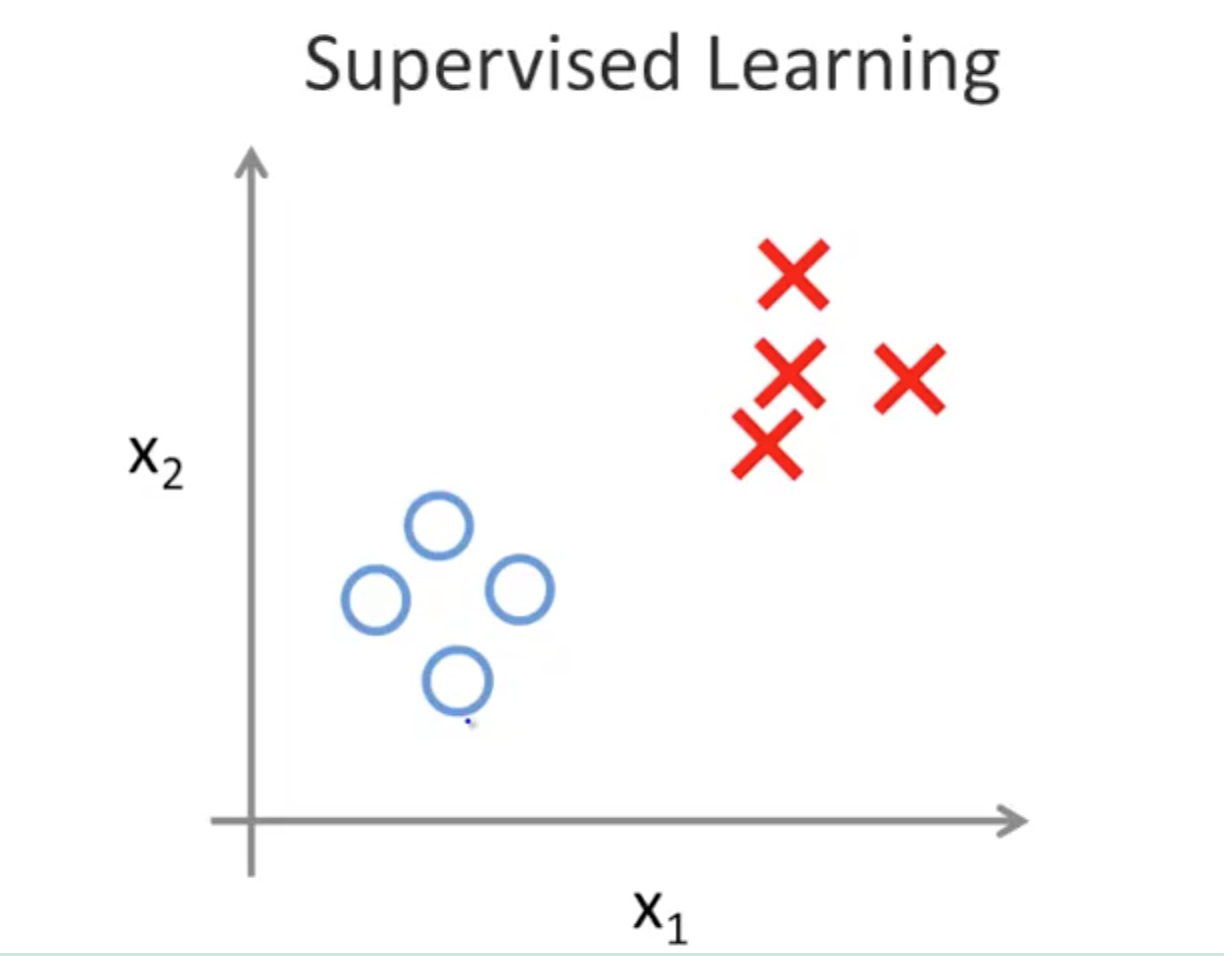
1a. Classification
- Discrete valued output (0 or 1)
- Example: Breast cancer (malignant and benign)
- Tumor size
- Age
- Classify 2 clusters to determine which is more likely
1c. Problem 1 (Regression Problem)
You have a large inventory of identical items. You want to predict how many of these items will sell within the next 3 months. 10000 items (continuous value)
1d. Problem 2 (Classification Problem)
You’d like a software to examine individual accounts and decide, for each account, if it has been hacked/compromised. 0: not hacked 1: hacked
2. Unsupervised Learning
- Making sense of data; patterns we don’t know in advance
- Examples
- Social network analysis
- Market segmentation
- Astronomical data analysis
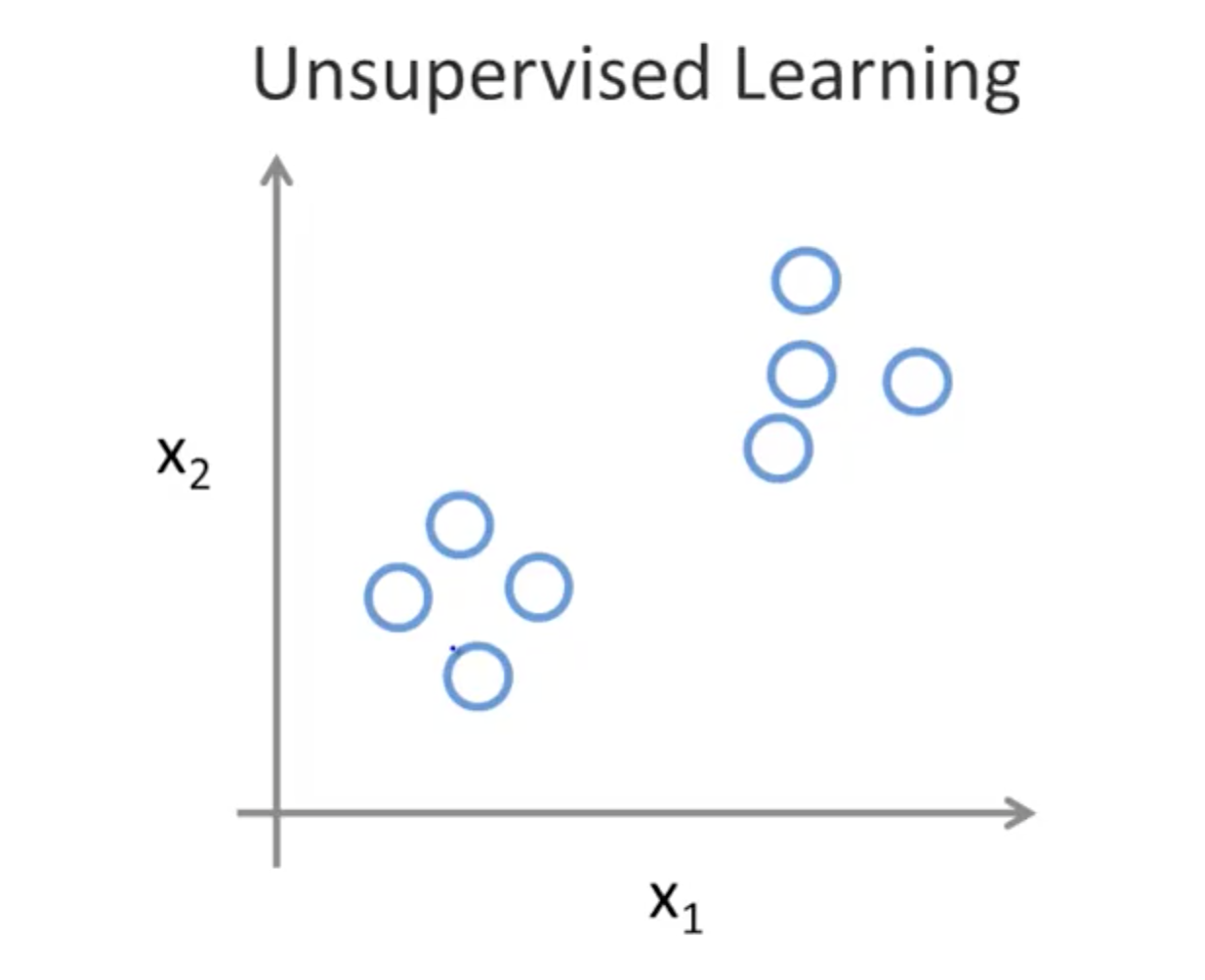
2a. Cocktail Party Problem
- Give 2 audio recording
- Feed to unsupervised learning algorithm
- Find structure
- Separate audio sources
2b. Unsupervised Learning Problems
- Given a set of news articles found on the web, group them into set of articles about the same story
- Given a database of customer data, automatically discover market segments and group customers into different market segments
3. Model and Cost Function
3a. Model Representation
- Supervised learning: given the right answer for each example in the data
- Regression: predict real-valued output
- Classification: predict discrete-valued output
- Training set: original data
- m = number of training examples
- x = input variable/features
- y = output variable/target
- (x, y) = one training example
- (x^(i), y^(i)) = i-th training example
- Representing hypothesis h
- linear regression with one variable (univariate linear regression)
- h(x) = a + bx
- a,b: parameters
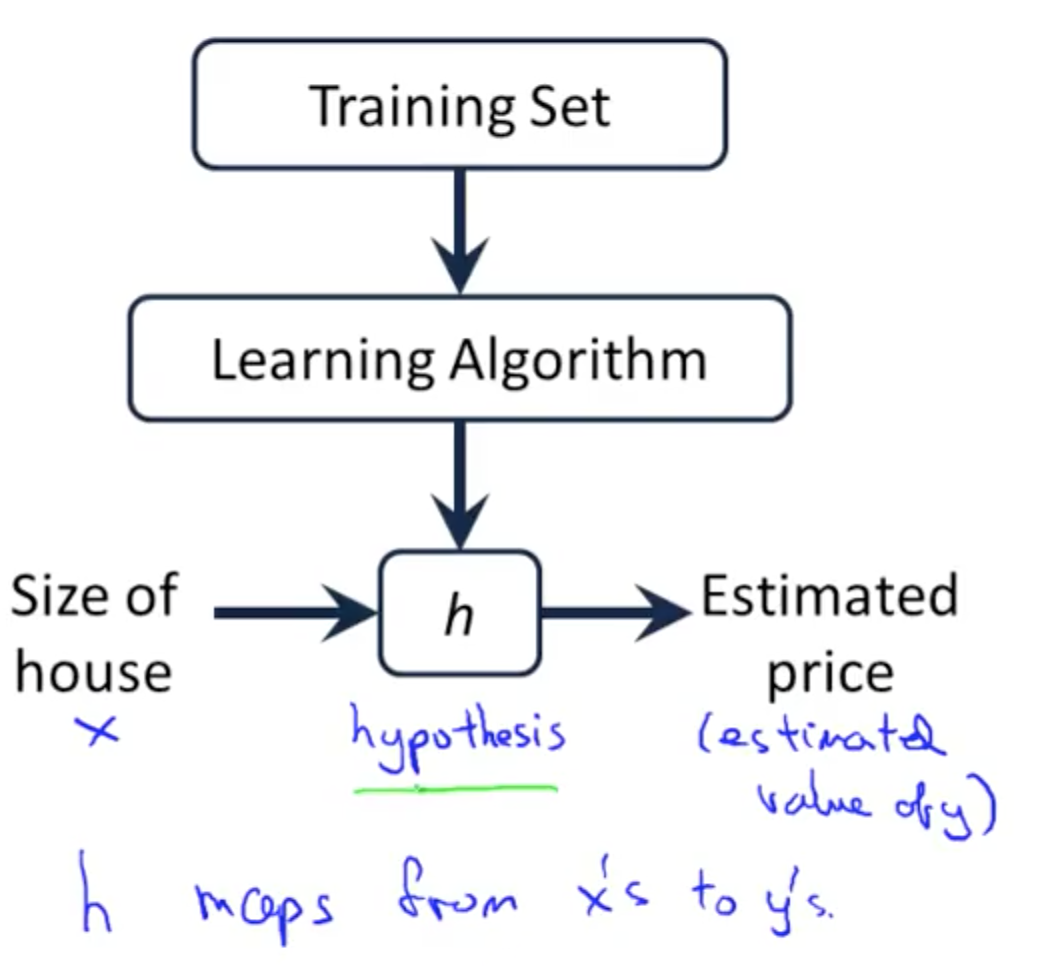
- a,b: parameters
- h(x) = a + bx
- linear regression with one variable (univariate linear regression)
3b. Cost Function
- Minimise squared error function
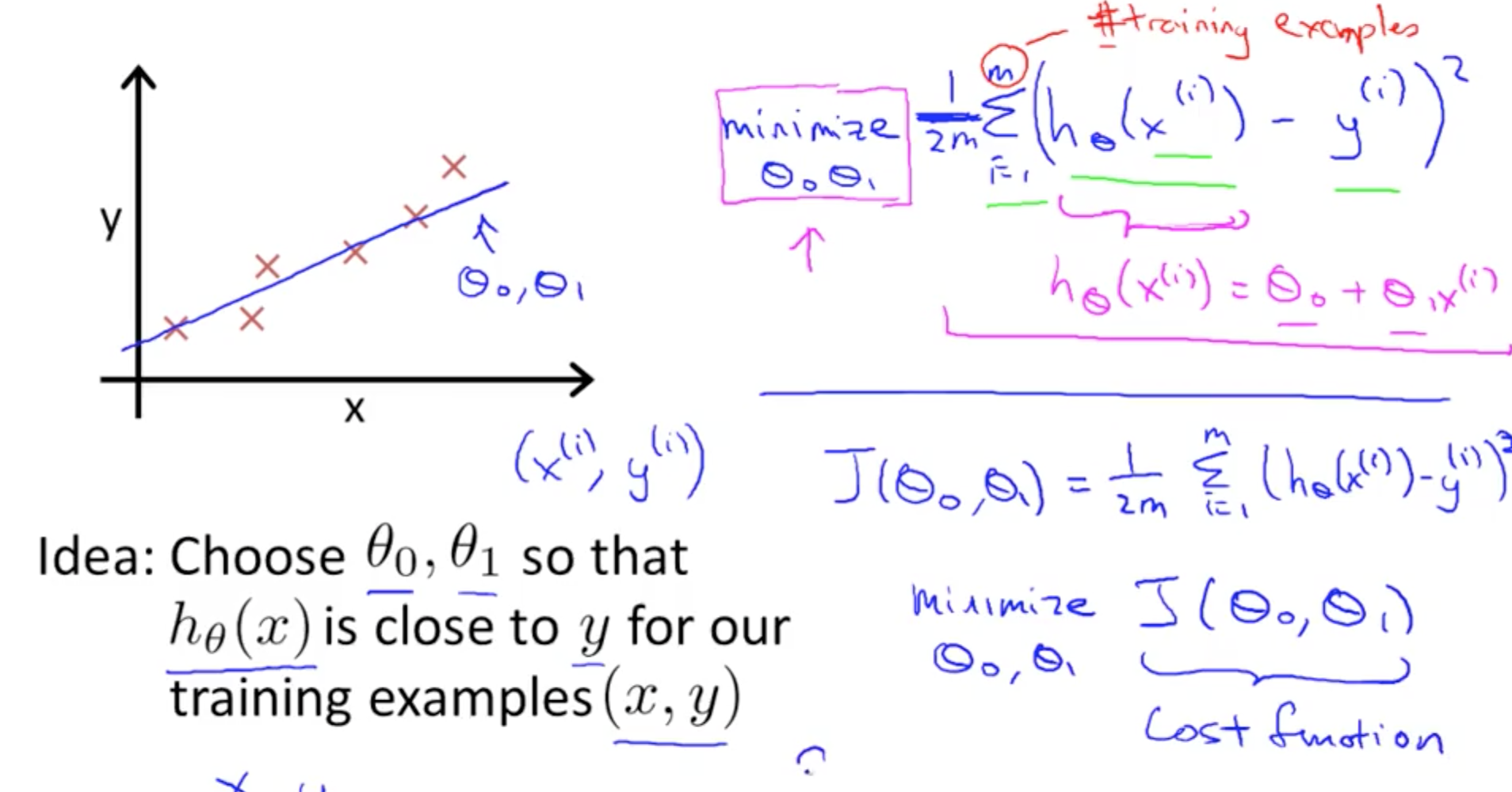
3c. h(x) and J(theta): 1 Parameter
- Assuming simplified cost function with only theta1
- Minimising J(theta) would fit the data most well
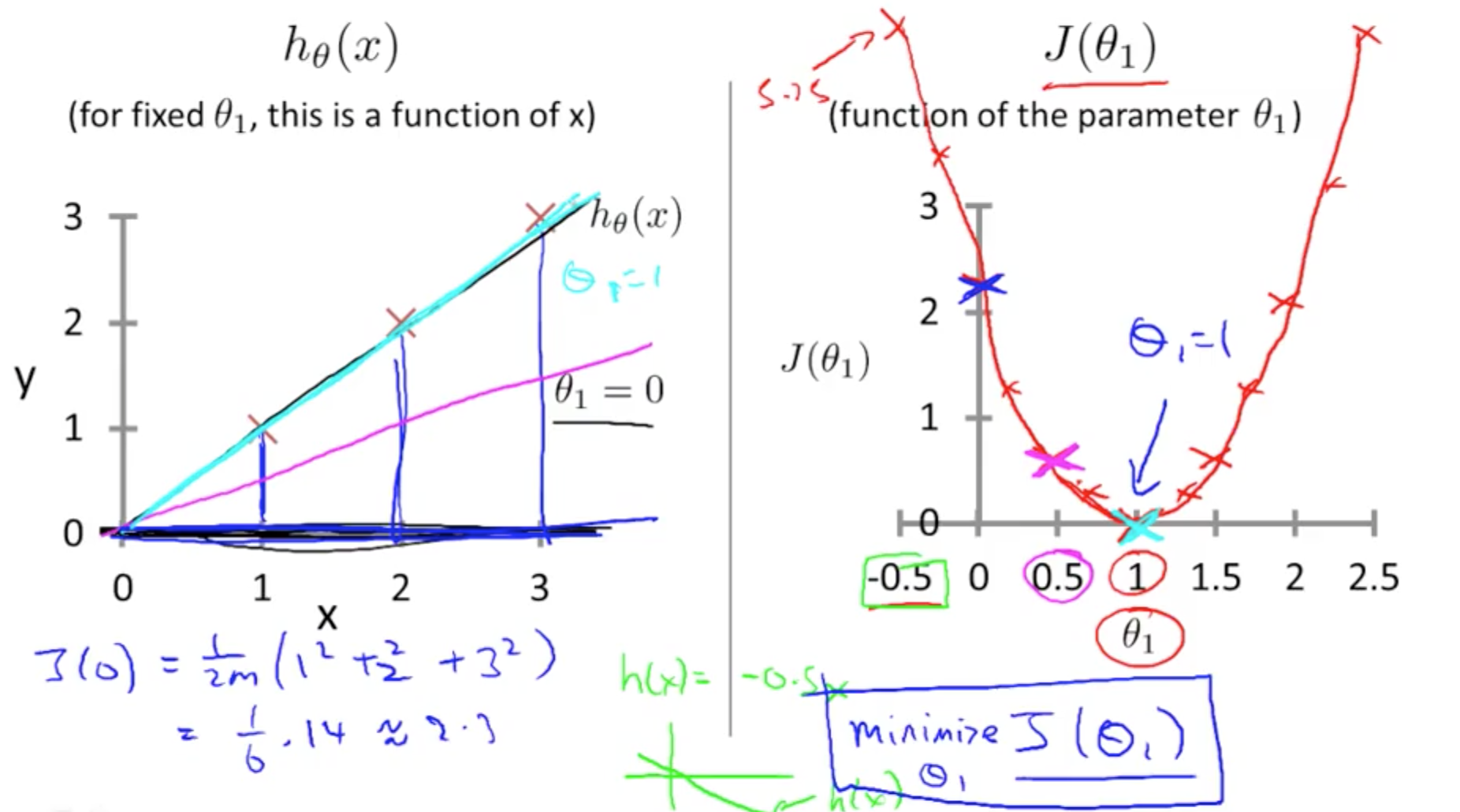
3d. h(x) and J(theta0, theta1): 2 Parameters
-
3D graph
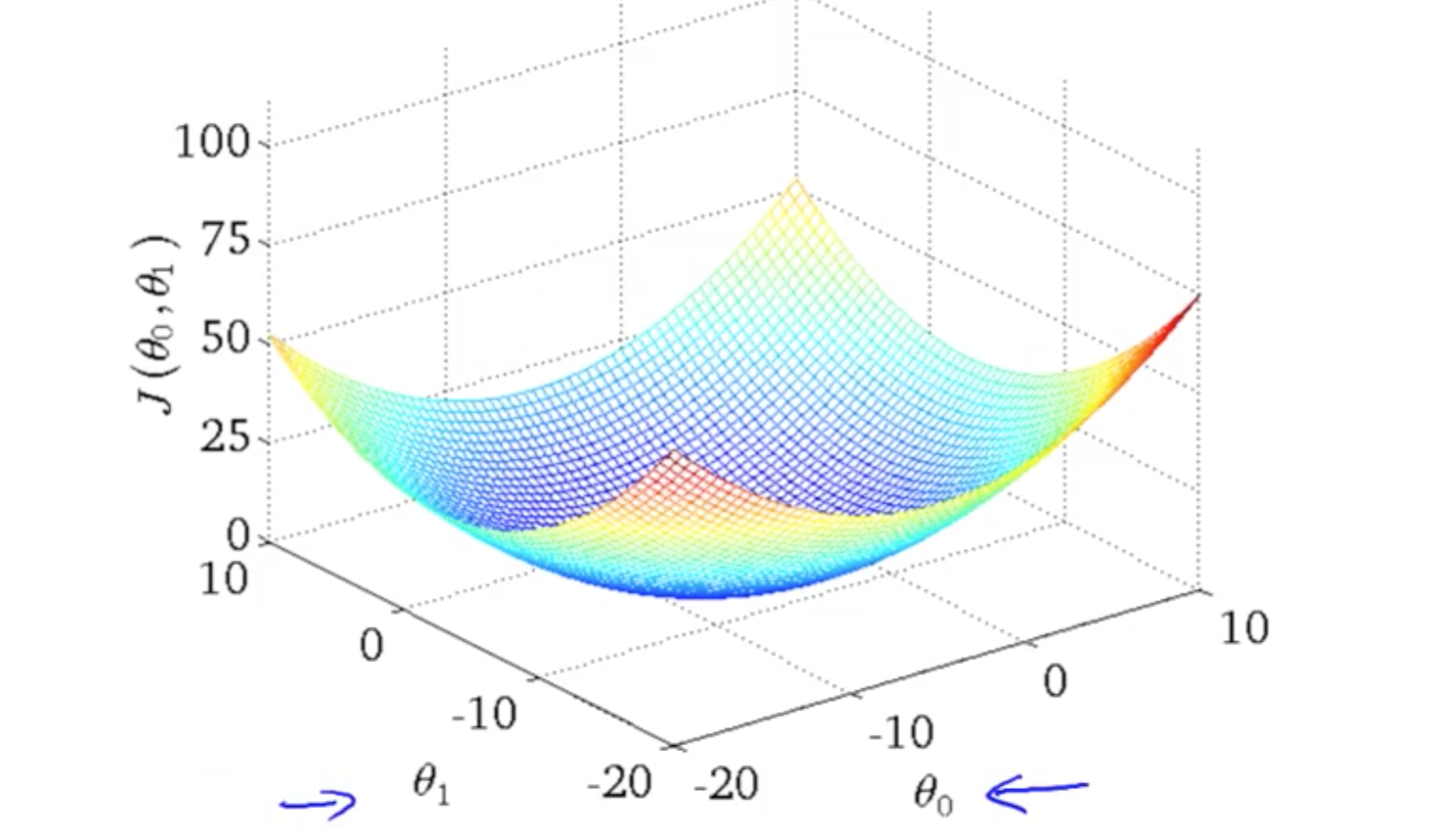
-
Contour graphs
- Minimum is in the smallest concentric circle

- Minimum is in the smallest concentric circle
4. Parameter Learning
4a. Gradient Descent
-
Concept
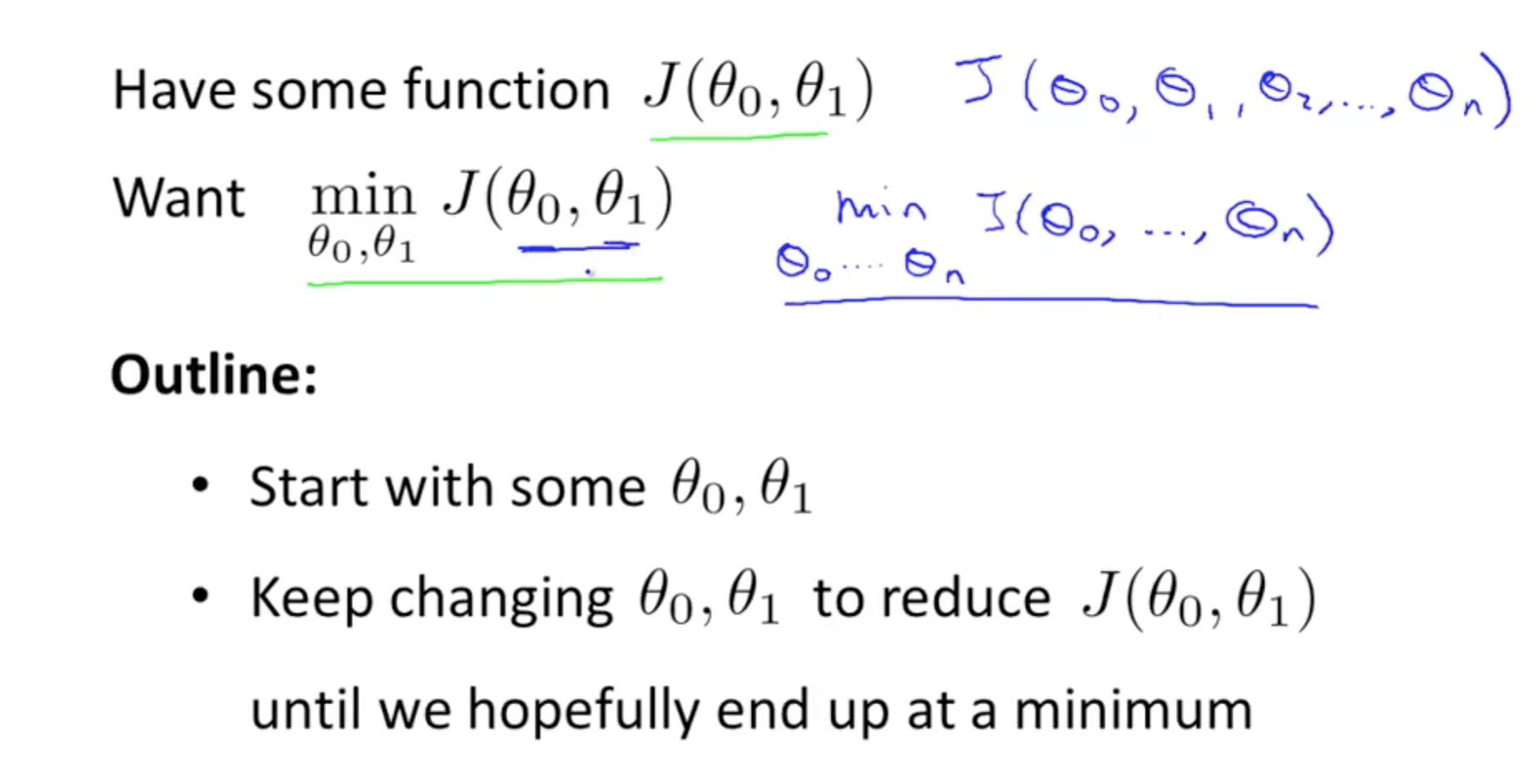

-
Gradient Descent Algorithm
- repeat until convergence
- a:= b (this means assignment)
- a = b (truth assertion)
- alpha (number, learning rate)
- large: aggressive gradient descent
- derivative: slope of J(theta)
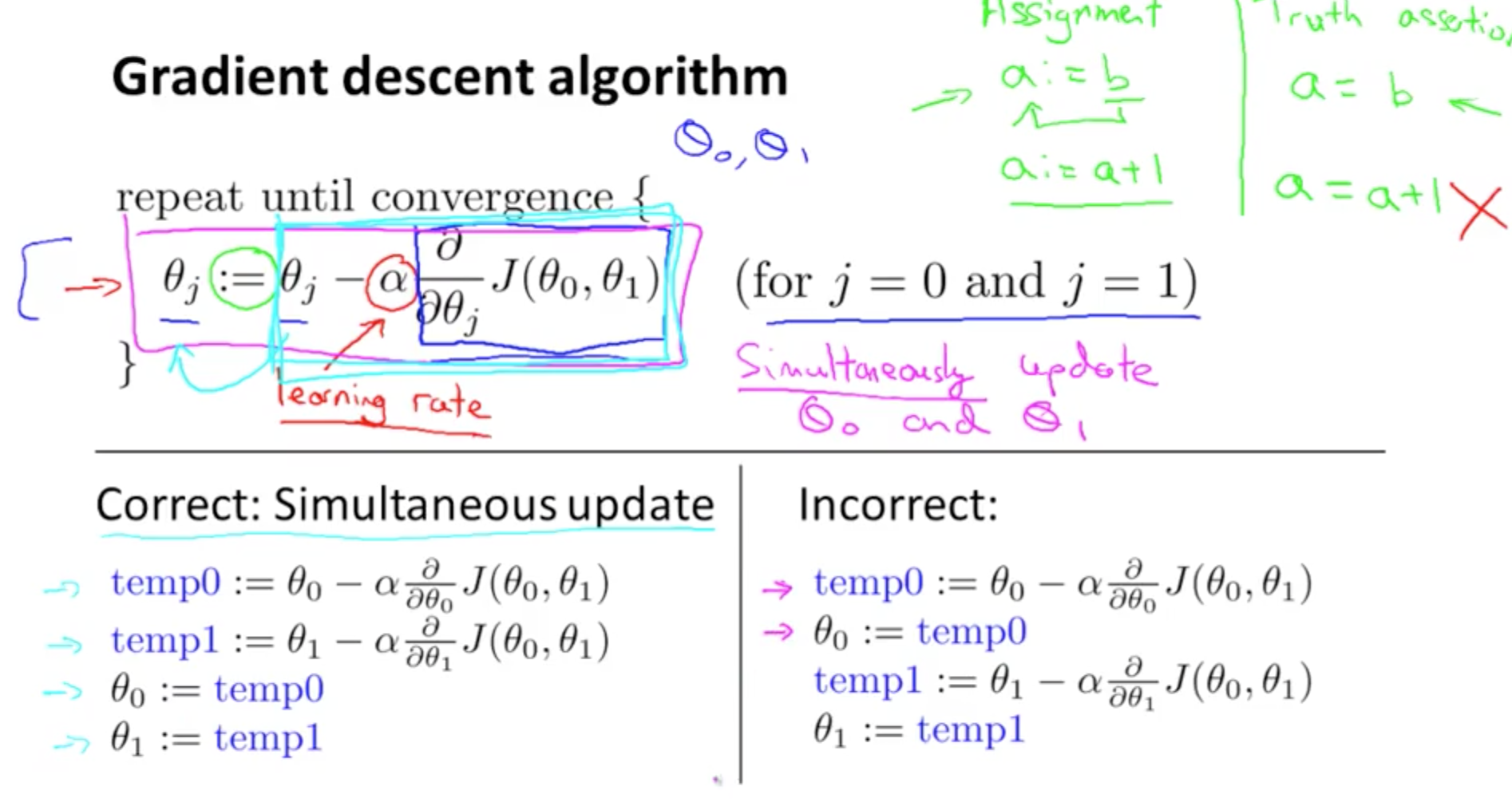
4b. Gradient Descent Intuition
- Derivative intuition
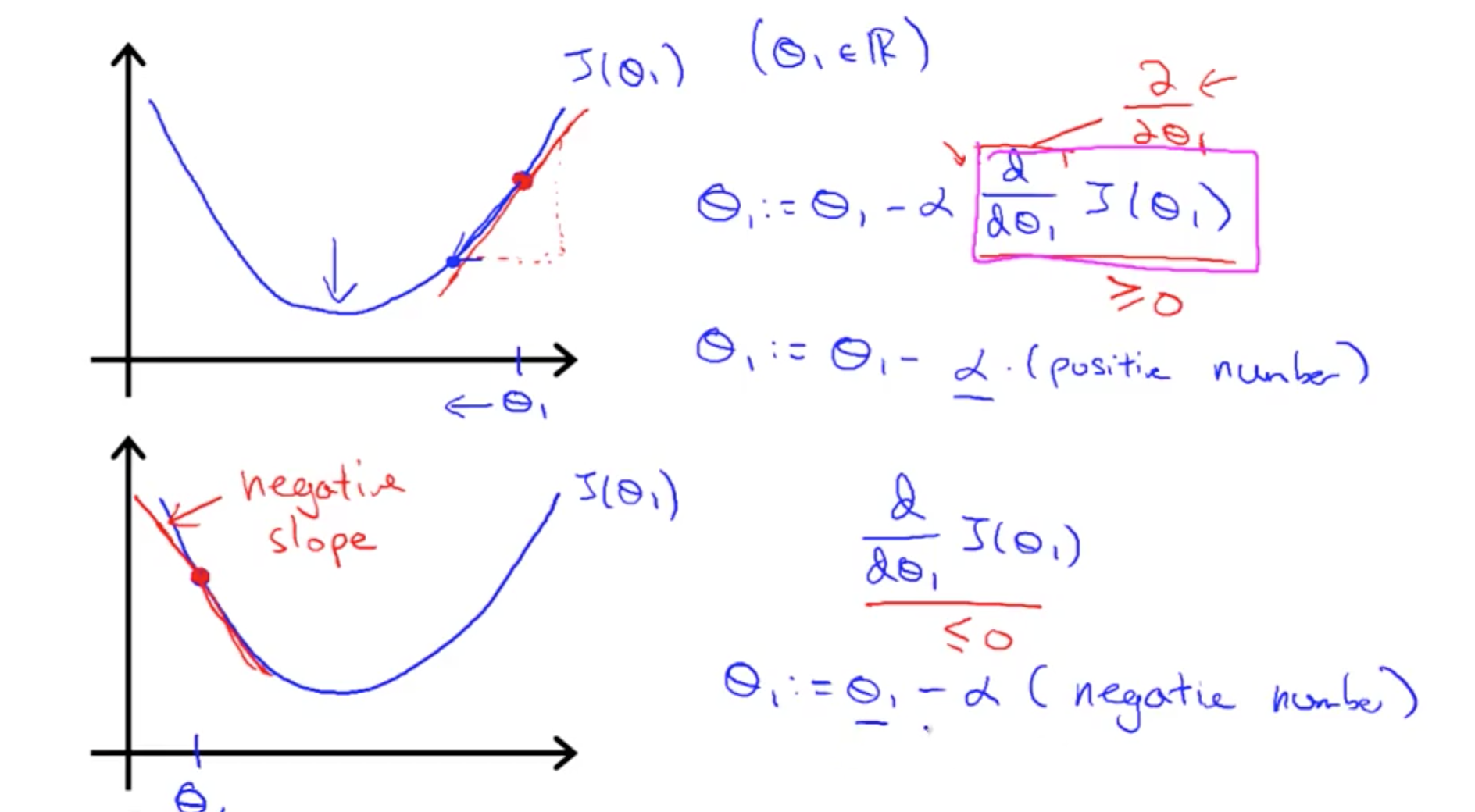
- Alpha intuition

- If already at local optima –> derivative = 0
- Theta will not change!
- Steps will be smaller even with alpha fixed
- This is because derivative decreases (slope decreases) nearing local minimum
- If already at local optima –> derivative = 0
4c. Gradient Descent for Linear Regression
- Apply gradient descent algorithm to linear regression
- For derivative: d (single parameter), delta (multiple derivative, partial differentiation)
- Plug J(theta_0, theta_1) into Gradient Descent’s derivative
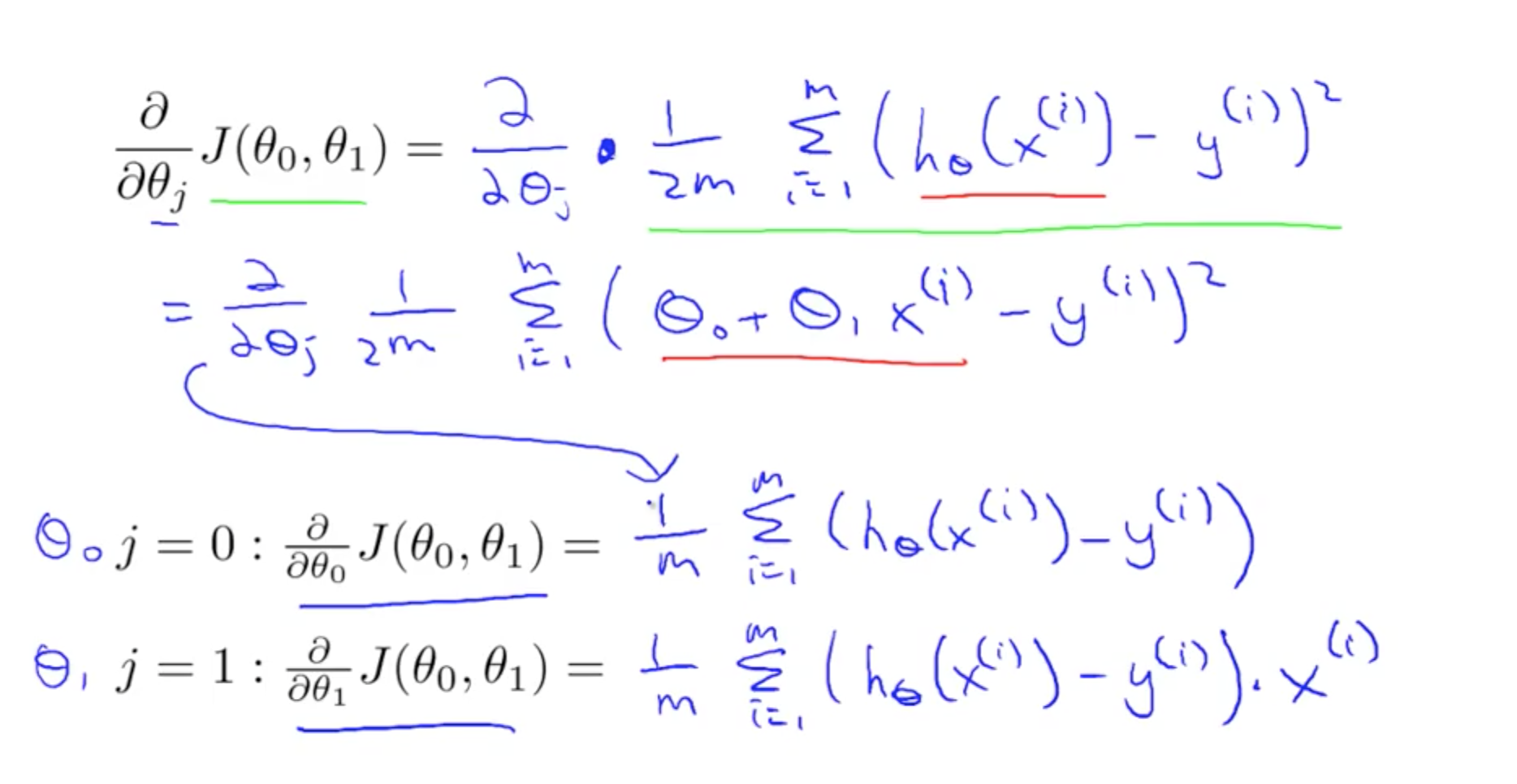
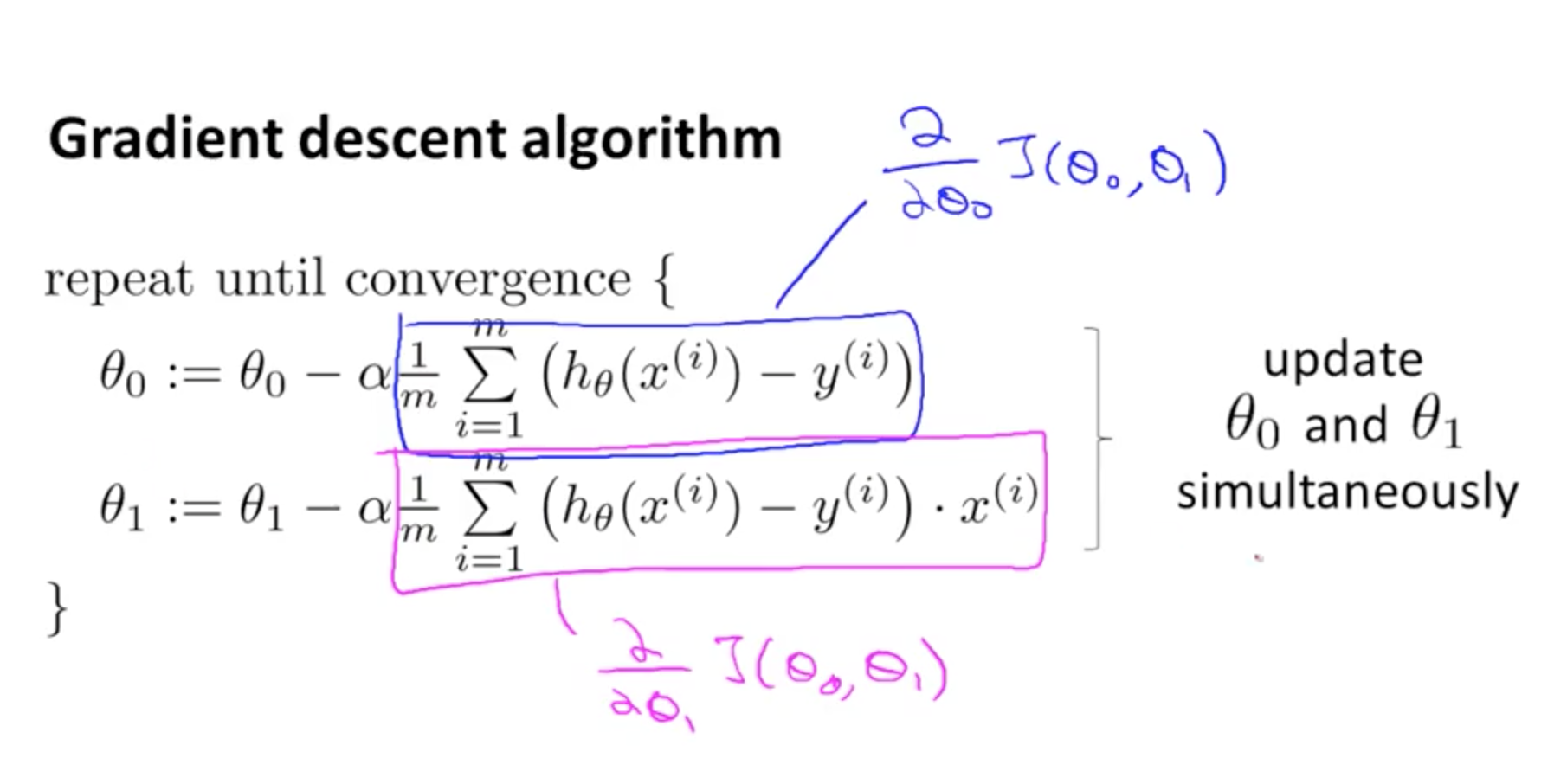
- Cost function for linear regression will always be convex function
- One global minimum

- Gradient descent for linear regression
- Keep changing parameters to reach global minimum
- This is called “Batch Gradient Descent”
- Each step uses all the training examples (batch)

- One global minimum